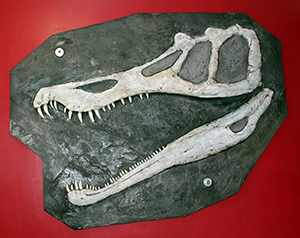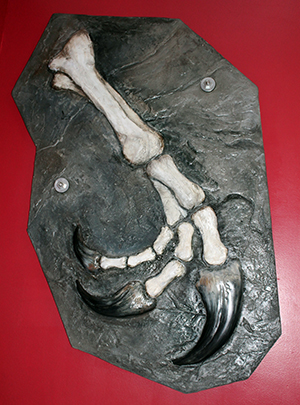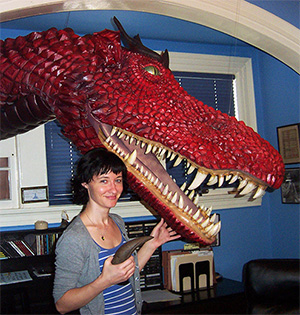 |
  |
 |
  |
Travis never doubted that dragons existed, but wondered how such a large creature could sustain itself, unnoticed, in a populated land. Surely, if cattle or sheep were going missing, it would be noticed by those from whose holdings the creatures were taken. The 1984 discovery of the Baryonyx provided a wonderfully plausible solution to Pike's conundrum. |
 |
If the dinosaur's natural habitat was a fog-shrouded wetland, and Long-Grin, like his distant ancestor, lived by a fog-shrouded lake and his staple diet was fish, there was no way people could ascertain the number and variety of fish the lake contained, nor determine whether their numbers were declining, increasing, or constant. And if Long-Grin always fished at night, hidden by darkness and fog, he was definitely unlikely to be observed. But it left one final sticky issue. In Pike's saga, Long-Grin had bat-like wings--apparently vestigial, since the creature could never have flown with them, because they were never large or strong enough to get even a very young dragon off the ground. That's when he finally realized, Long-Grin's "wings" were actually "fins," providing propulsion and maneuverability, placing Long-Grin at the top of its food-chain, swimming or walking along the bottom, his eyes and nostrils barely above the surface, much like its modern crocodilian cousins. |
 |
The lovely young lady in the Otherworld Cottage office, holding a museum replica of a Baryonyx claw in her right hand and tickling Long-Grin's chin with her left, is my goddaughter, Andrea, whose mother, Linda Snyder, created the "faux baryonyx fossils" displayed on this page. And one final note for our most observant visitors. If you look very closely, you'll see Long-Grin's eyes are green. At this stage in Long-Grin's development, his eyesight was poor and bright lights were almost unbearable. So, Travis began a search for the best dragon-vision specialist money could buy--and you'll never guess whose name appeared right at the top of the list! Page updated 4/10/2022 |